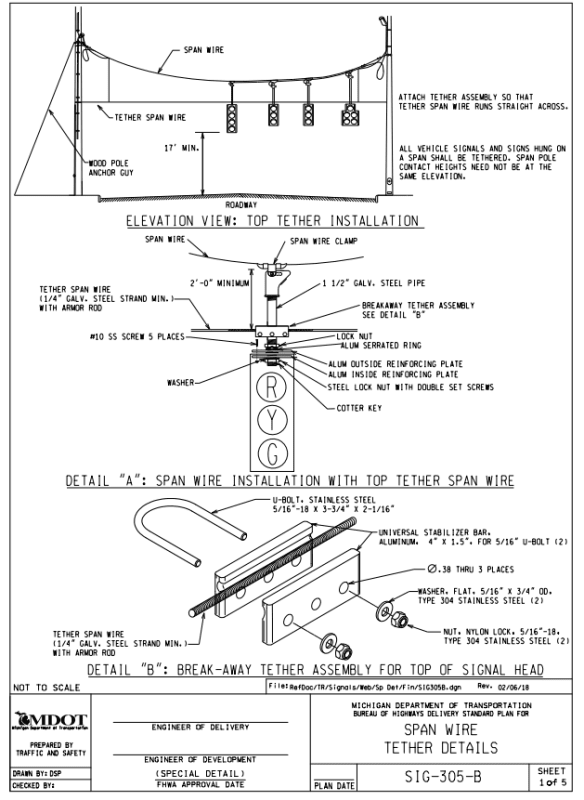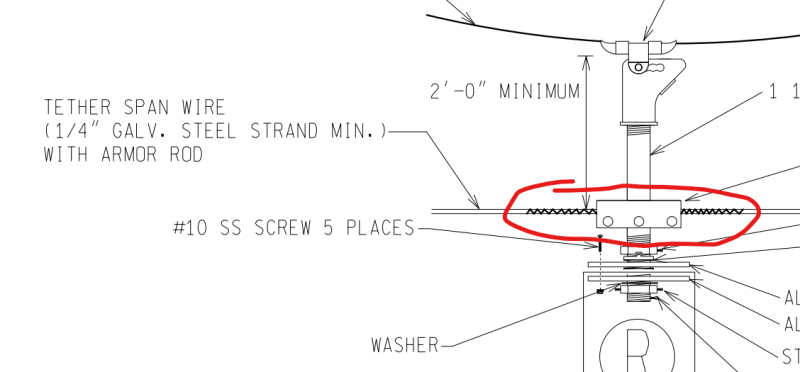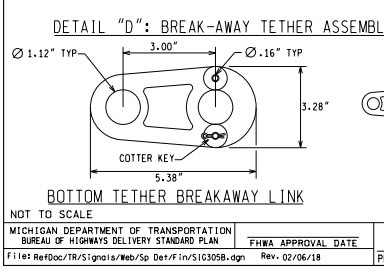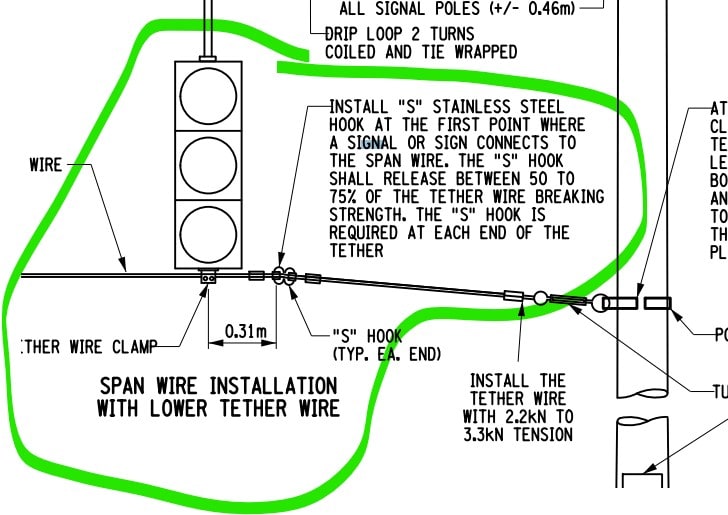- I'm dealing with another engineer's work and that engineer is no longer available. I've no project documentation other than the drawings.
- The project is a sign at the entry to a retail plaza. It is not a traffic signal.
- The project includes the component below which nobody involved seems to know how to procure.
- Some GoogleFu has made it clear that we replicated the detail below from some US DOT.
So my questions are these:
1) If I wanted one of these breakaway clamps, where would I get one? Are they on the shelf at some traffic signals store? Are they custom fabricated? If i can just figure out a way for my client to reasonably procure one of these things, my work shall be done.
2) I'd like to figure out if these clamps are actually required for a non-signals / non-traffic project such as mine. To that end, what is the purpose of these things? My best guesses based on staring at it for a while:
a) Tether wire keeps signals from swinging excessively. Hence they are straight and substantially without sag.
b) Because tether wire has no sage, it can't really be designed for much load. If it's overload, it snaps.
c) If the wire snaps, it's supposed to slide out of the clamp for some reason? Other than this, I don't see what is "breakaway" about this.
3) Is the "armor rod" just meant to be protection for the wire where these clamps grab on to it? Does the tether wire slide freely within the armor rod?

- The project is a sign at the entry to a retail plaza. It is not a traffic signal.
- The project includes the component below which nobody involved seems to know how to procure.
- Some GoogleFu has made it clear that we replicated the detail below from some US DOT.
So my questions are these:
1) If I wanted one of these breakaway clamps, where would I get one? Are they on the shelf at some traffic signals store? Are they custom fabricated? If i can just figure out a way for my client to reasonably procure one of these things, my work shall be done.
2) I'd like to figure out if these clamps are actually required for a non-signals / non-traffic project such as mine. To that end, what is the purpose of these things? My best guesses based on staring at it for a while:
a) Tether wire keeps signals from swinging excessively. Hence they are straight and substantially without sag.
b) Because tether wire has no sage, it can't really be designed for much load. If it's overload, it snaps.
c) If the wire snaps, it's supposed to slide out of the clamp for some reason? Other than this, I don't see what is "breakaway" about this.
3) Is the "armor rod" just meant to be protection for the wire where these clamps grab on to it? Does the tether wire slide freely within the armor rod?




